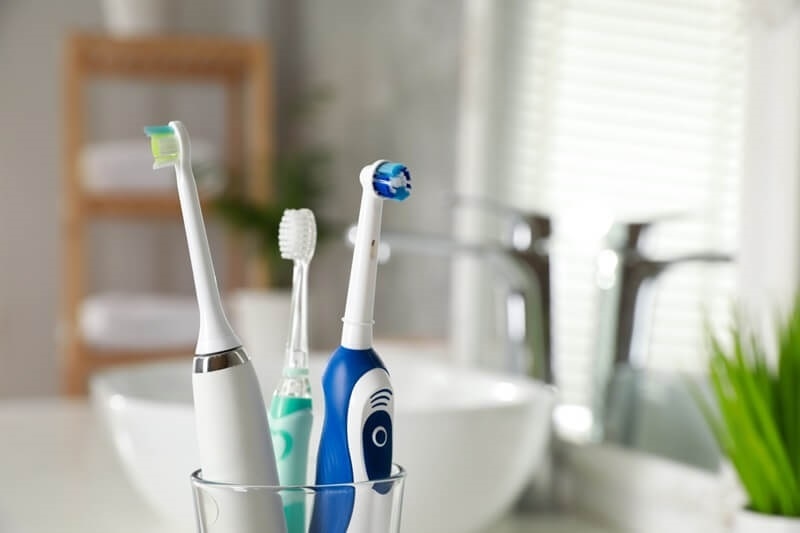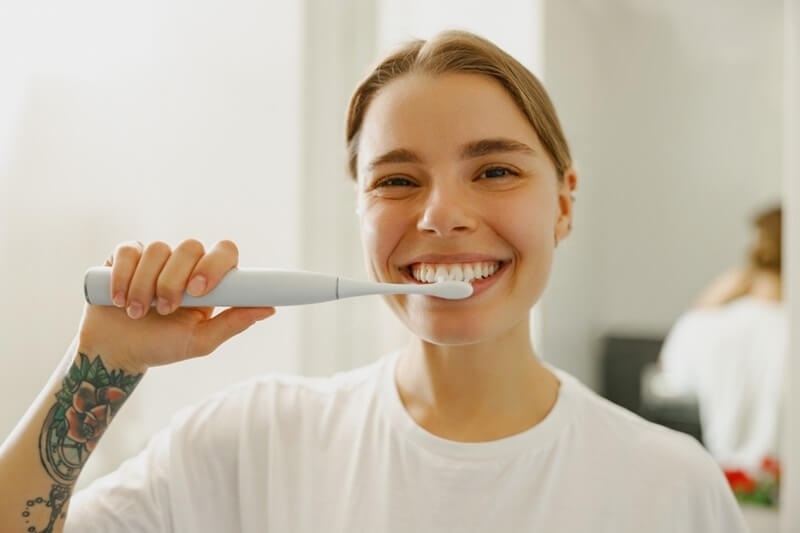
The electric toothbrush is now the top choice among dental professionals and consumers regarding teeth and gum health. These toothbrushes offer speed, motion, and technology working at the same time to clean teeth and protect gums, which is not possible for manual toothbrushes. The debate continues over manual versus electric brushing; however, modern research consistently shows that electric models, particularly rotating and sonic toothbrushes, do a better job of plaque removal and reducing gum inflammation.
These toothbrushes were invented for consistent cleaning with less effort while being appropriate for any age range. In addition to speed and efficiency, from pressure sensors to smart timers, products designed for brushing teeth daily are simpler and more efficient. This definitive guide discusses the benefits of electric brushes, various categories of products available, and professional tips on finding the ideal toothbrush for good oral hygiene.
This toothbrush functions by way of automatic movement—oscillating, rotating, or vibrating—to clean the teeth more effectively than a manual brush can. The movements of the bristles are designed to disintegrate plaque biofilm and dislodge food particles with greater accuracy.
Sonic toothbrushes, for example, produce high-speed vibrations—up to 62,000 strokes per minute—that form soft microbubbles to access even the most difficult areas. Rotating brushes have a small, round head that oscillates back and forth, offering a polishing effect like professional dental instruments.
The electrical mechanism aids in ensuring consistent pressure from the user, avoiding overbrushing—one of the leading factors for enamel erosion and gum recession. Such accuracy is why electric toothbrushes are a better option when put in contrast against manual vs electric brush methods.

Multiple clinical studies suggest that this toothbrushes remove as much as 21% more plaque than manual ones. This improvement helps to prevent cavities, gingivitis, and other infections of the mouth. The rotating action ensures that even someone who brushes poorly will get a sufficient clean in the two minutes recommended.
Electrical brushes stimulate gum tissue and improve blood flow, leading to less inflammation. This can assist those with early signs of gum disease and sensitivity. The sonic and oscillating action also helps to stimulate gums without irritating.
Most electrical brushes come with built-in timers that make you brush for two minutes, as advised by a dentist. Pressure sensors remind you when you brush too hard—a very important feature that saves tooth enamel and gum health.
For an individual toothbrush, cleaning is performed differently by everybody, while toothbrushes operates with electricity create a consistent cleaning process that’s perfect for children, seniors, or anyone with restricted movements from arthritis or any other medical condition.
Additional movement applications are effective at removing surface stains of coffee, wine, and tobacco, and magnetic toothbrushes provide that optimal angle via their movements. The result is whiter and brighter-looking teeth with a fresher breath—so much so that they may be the preferred toothbrush for someone seeking both a cosmetic outcome and improved oral hygiene.
The age-old argument between manual and electricity brushing has persisted for decades. As much as the manual brushes are cheap and easily available, the clear evidence continues to indicate that electric toothbrushes provide quantifiable benefits in efficiency of cleaning and gum health.
Manual brushing relies heavily on technique, time, and pressure. Most people fail to maintain consistent brushing habits, leading to uneven plaque removal and potential gum damage. The dynamic toothbrush, however, automates these processes to maintain optimal motion and pressure at every use.
In addition, electrical toothbrushes are especially helpful for those with braces, retainers, or dental implants. Because they can get around orthodontic brackets and below gumlines, buildup and decay are minimized.
For optimal oral care, dentists usually suggest pairing electricity brushing with appropriate flossing and mouthwash. In manual vs electric, with respect to oral health and convenience, electric technology stands out as the long-term choice.
A sonic toothbrush employs high-frequency vibrations to sweep fluid and bubbles along and around the gums and teeth. This results in a dynamic cleaning action that is beyond the physical reach of the bristles. Sonic brushes are very good at dislodging plaque from tight areas and along the gumline.
They're also gentle on enamel and offer a deep, invigorating clean. Most sonic models have several cleaning modes—"whitening," "sensitive," or "gum care"—to customize your experience.
A rotating brush works with a round head that oscillates or spins to replicate the motion used by professionals during in-office cleanings. The little round head offers easy maneuverability between each tooth and complete coverage.
Rotating brushes are usually advised for persons with severe plaque accumulation or those who require specific polishing. They are typically more affordable than sonic versions but have similar effectiveness for cleaning teeth.
Ultrasonic models use vibrations at a frequency beyond the human hearing range (greater than 20,000 Hz). The tiny waves shatter bacteria chains that make up plaque to prevent gum disease and halitosis.
A percentage of high-end brushes add sonic and rotating features for multiple cleaning actions, pitched as the best toothbrush versions for complete oral cleaning.
Choosing an electrical toothbrush involves several considerations:
Choose between sonic, oscillation, or dual-action cleaning methods, based on your oral health needs. Sonic cleaner infused models provide a wider cleaning area, while the oscillating cleaner provides a more direct polishing mechanism.
Softer bristles help to clean your teeth without the chance of wearing down the enamel or injuring your gums. Standard or hard bristles may only wear down the enamel and gum over the long term.
Most modern toothbrushes which works on electricity feature rechargeable batteries with good battery life, making them suitable for both travel and daily use.
Premium models come with Bluetooth connectivity, smartphone app integration, and real-time feedback to monitor brushing habits. These features transform everyday oral care into a fun experience, driven by data.
While power toothbrushes can carry a higher upfront cost, they provide long-term returns with a better state of oral health and lower dental treatment costs. To ensure that the toothbrush operates at its best, replace the head every three months.
Clinical studies validate regular use of electrical toothbrushes as part of an avid dental care practice. According to a study on the Journal of Clinical Periodontology, subjects using brushes had 11% less plaque and 6% healthier gums after three months when compared to those using manual brushes.
Yet another ADA study validated that both sonic toothbrushes and rotary brushes decrease gingival bleeding and enhance cleaning effectiveness, particularly when used together with fluoride toothpaste.
Long-term evidence also suggests users of electronic toothbrushes are less likely to experience advanced gum disease and loss of teeth later in life. These findings illustrate why dental professionals consistently recommend electric toothbrushes over manual toothbrushes.
More and more, today’s consumers are becoming conscious of environmental impacts and the cleanliness of their products. Fortunately, toothbrush manufacturers have responded with recyclable heads, eco-friendly packaging, and rechargeable batteries that last longer.
Regarding cleanliness, electrical toothbrushes have a lower likelihood of harbouring bacteria if stored properly. Many electric toothbrush models have now added UV sanitising stations or antimicrobial brush caps for extra precautions.
Routine maintenance—rinsing after every use, and changing the head every 3 months—will ensure top performance and cleanliness.
If you follow these directions from dental experts, you will receive the maximum benefits from your electric toothbrush.
Using your power toothbrush with good technique maximises plaque removal and minimises harm to your teeth and gums.
Myth 1: Manual Brushing Is Just as Good:
Fact: Manual brushing, when done with good technique, works, but most people cannot maintain a consistent stroke or timing. These brushes take away more plaque with less effort.
Myth 2: Electric Toothbrushes Are Too Harsh
Fact: Newer brushes have pressure sensors and gentle bristles and are safer for enamel than manual brushes.
Myth 3: They're Only for Lazy Brushers
Fact: Power toothbrushes are recommended for everyone—from children to seniors—because they enhance precision, timing, and cleaning results.
Despite numerous studies and years of personal experience, the electric toothbrush remains the most effective and user-friendly choice for dental hygiene. When comparing manual vs. electrical brushing, the benefits of plaque removal, gum protection, and ease of use make it clear that brushing is simply better.
Whether you prefer the gentle vibrations of a sonic toothbrush or the cleaning power of a rotating toothbrush, the results are indisputably better than the outdated original methods. Investing in the best toothbrush you can afford, one that reflects your brushing style, is one of the best long-term investments you can make for your oral health.
An electric toothbrush is more than a luxury; it is a scientifically proven instrument for better oral health and oral disease prevention. Equipped with cutting-edge features, ergonomic handles, and the established benefits of the magnetic toothbrush, you are able to achieve a professional level of comfort in your own home.
It does not matter if you choose a sonic toothbrush, rotating toothbrush, or a smart-connected toothbrush; using one regularly with a good brushing technique will transform your oral health for the better. Discuss with your dentist the most suitable toothbrush for your needs to enjoy a cleaner, healthier smile every day.
This content was created by AI